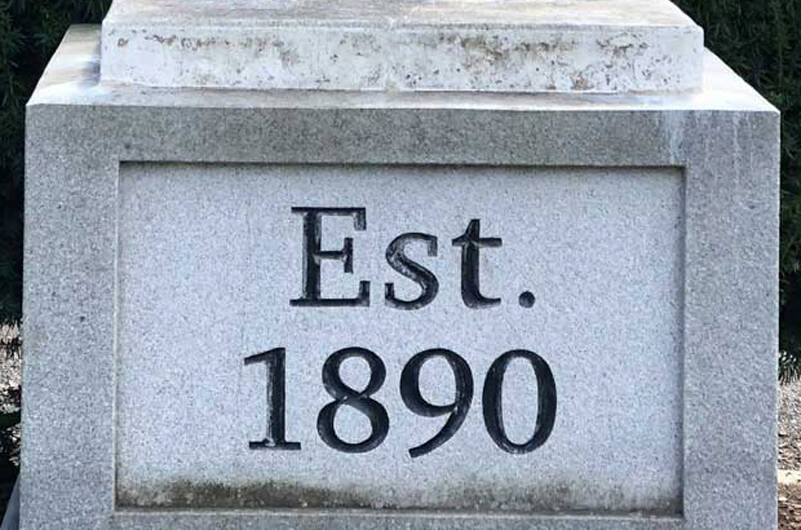By Morf Morford, Tacoma Daily Index
1890 was a busy year in Washington. Washington had become a state the year before. To put it mildly, there was a lot happening in the new city of Tacoma.
And the Tacoma Daily Index, under a variety of names (“Daily Mortgage and Lien Record” was the original name) has been with and alongside Tacoma from the very beginning.
Tacoma was incorporated on November 12, 1875, after being chosen as the western terminus of the Northern Pacific Railroad in 1873.
Shipping, by rail or water, was, and is still central to Tacoma’s identity.
British writer Rudyard Kipling visited in 1889 and described Tacoma as “literally staggering under a boom of the boomiest”.
Tacoma, thanks to resources and access to ports and rail systems, became known as the Lumber Capital of the World.
The Pacific Northwest was hit hard by the Panic of 1893 – if you look closely at historic buildings, you’ll see many with a construction date of 1888-90, but almost none around 1893. This nationwide recession/depression impacted the whole country, but hit the “new” cities (like Seattle and Port Townsend) particularly hard.
By 1901 warehouses and grain terminals lined the waterway (later named after Thea Foss)
The Great War changed Tacoma
Formative early employers were resource-based industry and the port, with timber companies and the shipyards.
In 1917, Camp Lewis (later Fort Lewis, and finally renamed JBLM) was established.
In November, 1918 voters created the Port of Tacoma.
Exit 133 – Tacoma as a nexus of the space/time continuum
In what can only be one of those synchronicities that would not even happen in the movies, we at the Index are celebrating our 133rd anniversary and Tacoma’s primary freeway exit to the downtown core is, oddly enough, Exit 133.
Some famous visitors
You might not think of Tacoma as a center of action and culture, but in the early days it was. Even before Washington became a state, several presidents, either while in office or before being elected, came through Tacoma.
From Teddy Roosevelt (in 1903) to Rutherford B Hayes (in 1880) and Benjamin Harrison (in 1891) politicians and well-known speakers from Mark Twain (in August of 1895; Twain saw little of Tacoma because of the pervasive smoke from that summer’s forest fires) to Antarctic pioneer Roald Amundsen (1913 and 1926) many celebrities have passed through town.
In later years these included Helen Keller, Charles Lindbergh and a variety of royalty and public figures from around the world.
One of the earliest visitors of note was Julia Ward Howe (in 1888) – the composer of “Battle Hymn of the Republic,” and noted abolitionist and suffragist.
A few years later (1916) Bengali poet/prophet Rabindranath Tagore began a North American tour in Tacoma. He had been awarded the Nobel Prize for literature in 1913 – the first such prize for a non-European. Tagore, among many other things, corresponded with Albert Einstein.
I mention this because in those years Tacoma saw itself as a bellwether, a thriving beacon of culture, opportunity, and yes, progress itself. With fortunes made, and many more promised, Tacoma was on the move.
Tacoma Grows
According to the census, the settler population of Tacoma in 1880 was shade over 1,000 (1,098). By 1890 that population was over 36,000 (36,006). That decade, by far, showed the largest and fastest growth Tacoma has ever seen – “boomiest” indeed.
For about 180 historic photos from this era in Tacoma, look here. Some familiar buildings were new when these photos were taken, a few were under construction. A few are still standing.
Tacoma’s population crossed 100,000 between 1920 and 1930. It would not cross 200,000 until after 2010. About 4 million live in the greater Tacoma/South Sound area as of 2022. To see all manner of minutia on the population of Tacoma look here.
The state population grew at a similar rate. In 1880 the census recorded a little over 75,000 in the entire state. By 1890, the state’s population was well over 350,000.
In short, Tacoma has grown, struggled, stalled and prospered in different ways over all those years.
The Tacoma Daily Index has recorded, chronicled and aided and abetted many of the changes our city has seen.
Much has changed in all those years. From the landscape to the number of us here to the pace of work and life, much is different. But like our urban landscape, if you look closely, you can see remnants and reminders of what came before.
And, whatever comes next, The Tacoma Daily Index will be here, recording and documenting the best and worst, the new and promising and, as one reader put it, “the good, the bad and the ugly” of life in and around Tacoma.






